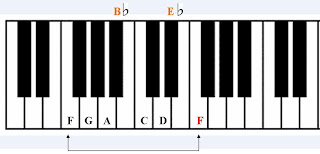It doesn’t matter what country or race you belongs to, there must be an appreciation or love for some genre of music. When we listen to our favourite style of music it definitely has some physical and emotional effect on us. But do we take time to identify the different components that exist in all the different styles of music we listen to?
The music we love listening to has special pack of ingredient which is referred to as musical elements. Today we will look at some of the main elements of music and what they mean to us as listeners.
Some of the main elements of music are rhythm, timbre/instrumentation, melody, harmony, texture, musical form, genre/style, pitch, tempo and articulation.
Rhythm
Rhythm is one of the most important elements of music. According to Roger Kamien in his book, Music: An Appreciation (4th Edition), Rhythm is the flow of music through time; the pattern of durations of notes and silences in music. So therefore rhythm is an arrangement of sounds and silences to create specific musical patterns during a particular time or duration. Rhythm also includes beat, meter, accent, syncopation and tempo. Timbre/Instrumentation
Timbre (which is pronounced tam’-ber) refers to the quality of sound that differentiate one from another. We are able to identify a trumpet different from a saxophone in music because of the timbre or tone colour of the instrument.
Instrumentation includes the wide variety of musical instruments that exist based on an era and culture of the composer. All musical instruments have its purpose and time in music. Some categories of musical instruments are; voice, brass, keyboard, electronic (electrophone), percussion, strings and woodwind.
Melody
Melody is a series of notes that are place at different pitch creating a tune. When you hear a saxophone playing “Marry had a Little Lamb” you will recognize the song because of the tune or melody. A good melody has a beginning, development and an ending. Some important aspects of melody are tonality (the key of the music), intervals, phrasing, articulation and cadence.
Harmony
Harmony refers to harmonic notation that accompanies the melody of a song. For example; when an individual is singing and the piano is playing in the background supporting the soloist, the piano that accompanies the singer is creating harmony. One interrelated aspect of harmony is chords. A chord includes three or more notes playing at the same time. Harmony can be created by other musical instruments even voices.
Texture
According to Roger Kamien in his book, Music: An Appreciation (4th Edition), texture refers to how many different layers of sound are heard at once, whether they are melody or harmony, and how they are related to each other. Monophonic, polyphonic and homophonic are three popular textures that can be identified easily in music. Musical Form
Most music that we listen to is designed so that we can identify the verses and chorus. Musical Form is the way in which a musical piece is structured or designed. In musical form music can have repetition, contrast and variation. There are different types of form; however, two popular types of forms are Three Part (Ternary) ABA and Two Part (Binary) AB.
Genre/Style
Genre/Style simply refers to the type of music. The types of music are based on culture and geographical location. Some genres of music are; Hip hop, R&B, Souls ballad, Reggae, Rock and Gospel.
Dynamics, Pitch, Tempo and Articulation
Dynamics, pitch, tempo and articulation can be classified as part of the expressive features in music.
Dynamics is how soft or loud the music is.
Pitch is the highness and lowness of sound in music.
Tempo refers to the speed of the music, how fast or slow the music is been played.
Articulation refers to how notes in music are been played. Notes can be played short and detached (staccato) and smooth flowing into each other (legato).
Thanks you for reading this article! Please subscribe so that you can get future articles on the same or other topics. The author intends to write more articles explaining each element in details.
VIEW PIANO LESSONS ON THIS SITE!
Here are other useful links that you might be interested in.
Photography
Music
Business & Investments
Softwares & Services
Travel Guide
Leave you comments! You can also subscribe and receive daily and weekly post. Have a great day!!




